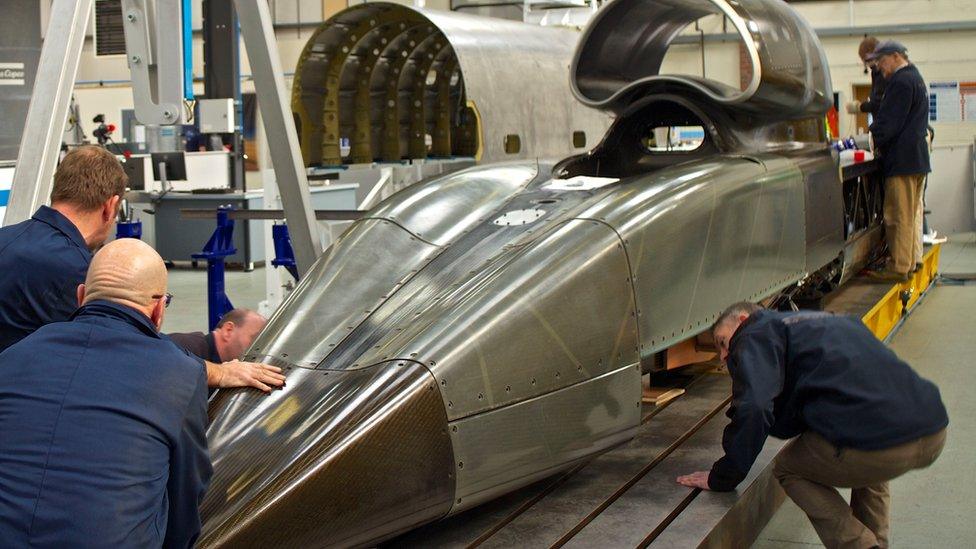Bloodhound car aiming for land speed record unveiled
- Published
Time-lapse footage shows the Bloodhound Super-Sonic Car being built
The design team behind the Bloodhound Super-Sonic Car has put its near-complete vehicle on show in London.
Some 8,000 people are expected to come and view it in Canary Wharf on Friday and Saturday.
Bloodhound, external has been built to smash the current land speed record of 763mph (1,228km/h) set by another British car, Thrust SSC, in 1997.
The new machine is due to start running next year on a special track that has been prepared for it in South Africa.
The aim at first will be to do 800mph (1,287km/h). The team wants to do this on 15 October, 2016.
But the goal eventually is to push the record above 1,000mph (1,610km/h). This could happen in 2017.
It has taken eight years of research, design and manufacturing to get to this stage.
A close look at the Bloodhound Super-Sonic Car
What is on show at the East Wintergarden venue represents about 95% of the finished article.
Bloodhound has yet to take delivery of its rocket system - one of three power units in the car - and is still missing a number of minor aero-surfaces, such as winglets and air brakes, and the long strake that sits in front of the fin on the top of the vehicle.
"It's amazing to see it like this, away from the workshop and almost ready to go racing," said chief engineer Mark Chapman.
"I can't wait to see people's reaction, to see the look on their faces."
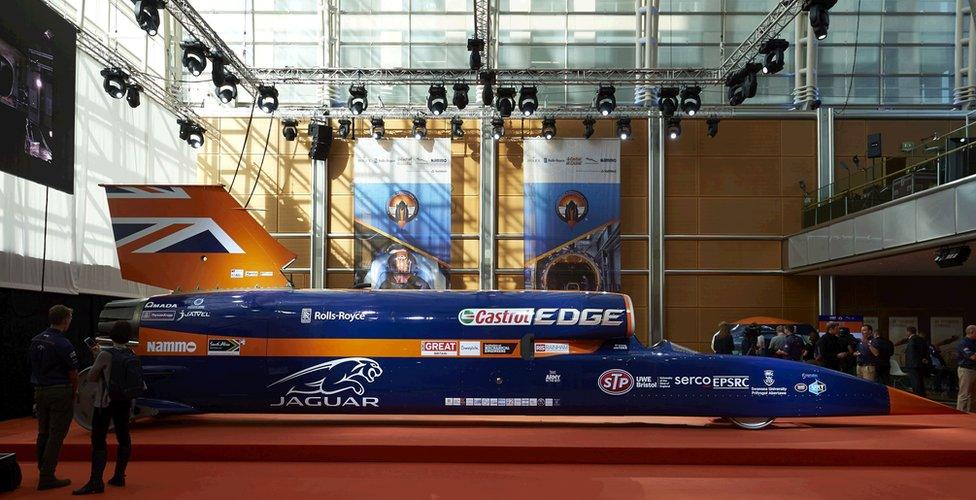
What is on show in London represents about 95% of the finished vehicle
One side of the car has been prepared with a panel removed, to show the vehicle's inner workings.
Visitors to the sold-out expo will also get to see the different types of wheel it will be using - solid aluminium discs for its record bids, and the super-thin rubber wheels that will be attached for low-speed shakedowns. The latter have actually been sourced from old Lightning fighter-jets and reconditioned.
Richard Noble: "To get us through next year we need on the order of £17m"
Once the event is over, Bloodhound will be taken back to its Bristol design HQ to await the integration of the outstanding components.
To reach 1,000mph, the vehicle will need to produce about 21 tonnes of thrust (210kN).
This will come from a Rolls-Royce Eurofighter-Typhoon jet engine, working in tandem with a hybrid rocket from Nammo of Norway.
The third power unit in Bloodhound is a supercharged Jaguar V8. Its job is to turn the pump that forces liquid oxidiser into the rocket's fuel chamber.
And if there is technical uncertainty hanging over the project right now, then it has to do with the pump system and the rocket.
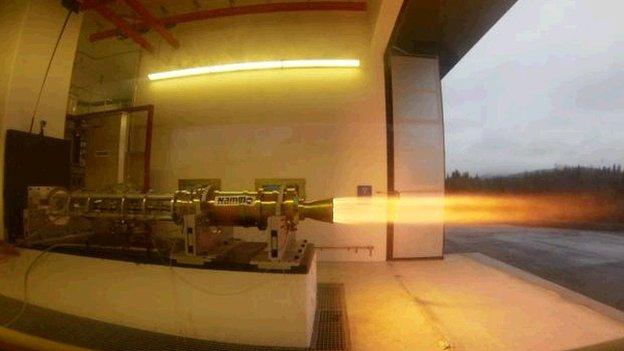
Nammo of Norway will be providing the hybrid rocket motors
The design configuration, with all components present and linked together, has yet to run in anger.
"We're working towards having the UK pump testing development completed by Christmas this year, and for us then to go out to Norway. We want rocket testing well under way in January/February," said Mark Chapman.
Assuming that all goes well, Bloodhound will complete some low-speed drives along the runway at Newquay Cornwall Airport, using just the Eurofighter engine.
This will get the car up to about 200mph (320km/h) and allow engineers to sign off all electrical and software control systems.
It should then all be about South Africa in mid-2016 onwards. The playa lakebed of Hakskeen Pan is the chosen location for the record bid.
Big promotion
RAF Wing Commander Andy Green will again be the driver.
His Thrust SSC vehicle broke the sound barrier in the Black Rock Desert of Nevada, US, when it traversed the "measured mile" at an average speed of 763.035mph (1,227.985km/h) on 15 October 1997.
Whether Bloodhound succeeds or not will depend in large part on funding.
It has had substantial in-kind support from the UK Government. Military engineers have been lent to the project to help assemble the car. And Bloodhound is about to become part of the Great Britain campaign, external which ministers use to promote the country overseas.
But Bloodhound is really a private venture, and running a land speed effort is expensive.
To date, the team has probably raised around £40m.
"To get us through next year, we need on the order of £17m," said Bloodhound director Richard Noble.
"Then, we'll come back from South Africa and we'll have learnt an enormous amount about it, and we'll probably have to make quite a lot of changes and that will reflect on the cost."
Army and RAF
It is hoped that being able to show off a near-complete vehicle will be a draw to new sponsors.
Defence minister Philip Dunne came to view the car. He called Bloodhound the next incredible chapter in UK engineering's quest to be better and to go faster.
"This is British manufacturing at its best, backing a British endeavour which the government is proud to support," he told BBC News.
"Over 350 firms, big and small, have helped create Bloodhound, with persistent help from military engineers from the Army and RAF.
"Bloodhound's story of pioneering research, cutting-edge technology and mind-bending performance is already inspiring the engineers of tomorrow."

Below the nozzle of the EJ200 are two brake-chute canisters. Below those is a space for the rocket
Jonathan.Amos-INTERNET@bbc.co.uk, external and follow me on Twitter: @BBCAmos, external
- Published23 September 2015
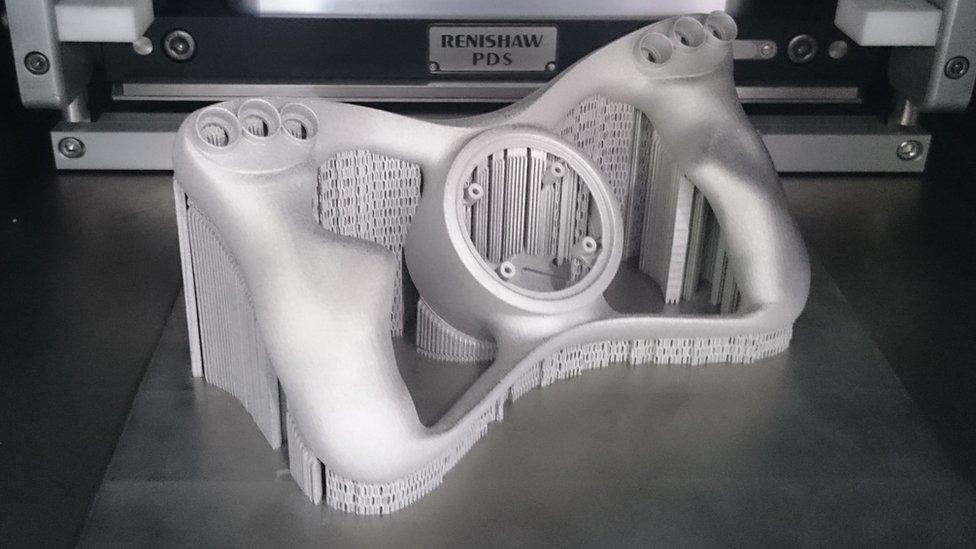
- Published14 September 2015
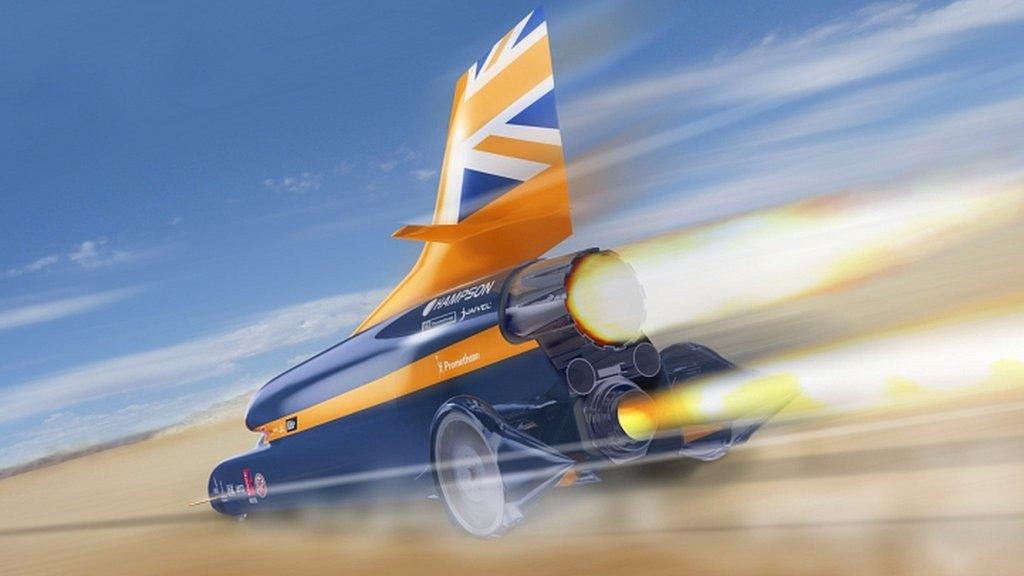
- Published12 June 2015
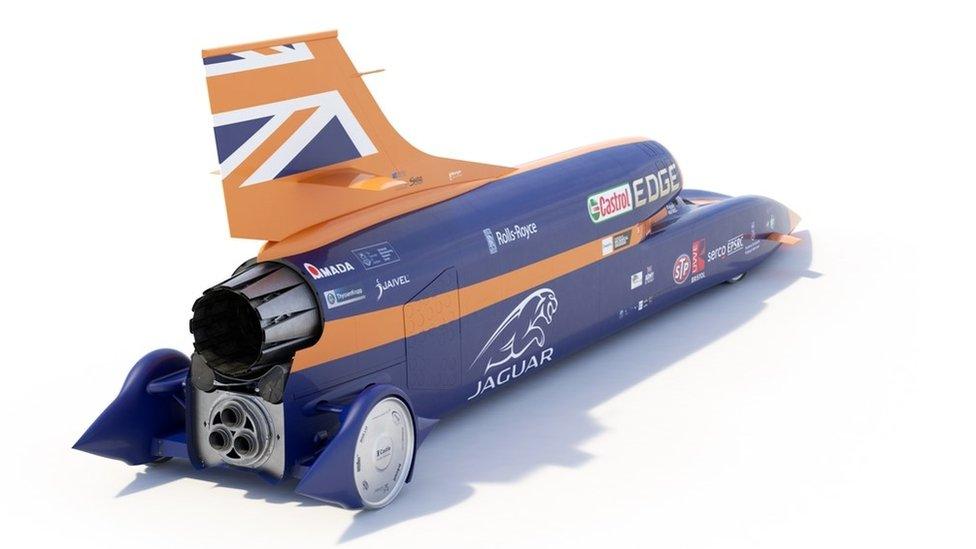
- Published10 June 2015
- Published19 May 2015
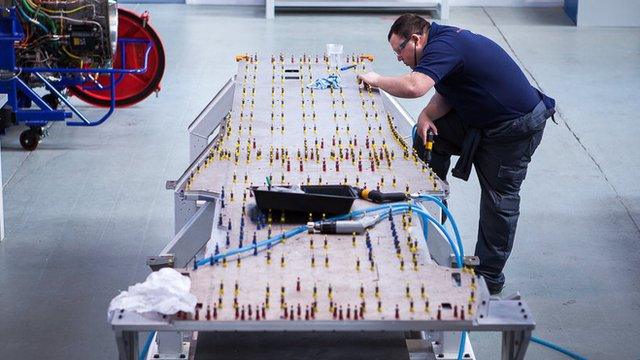
- Published28 April 2015
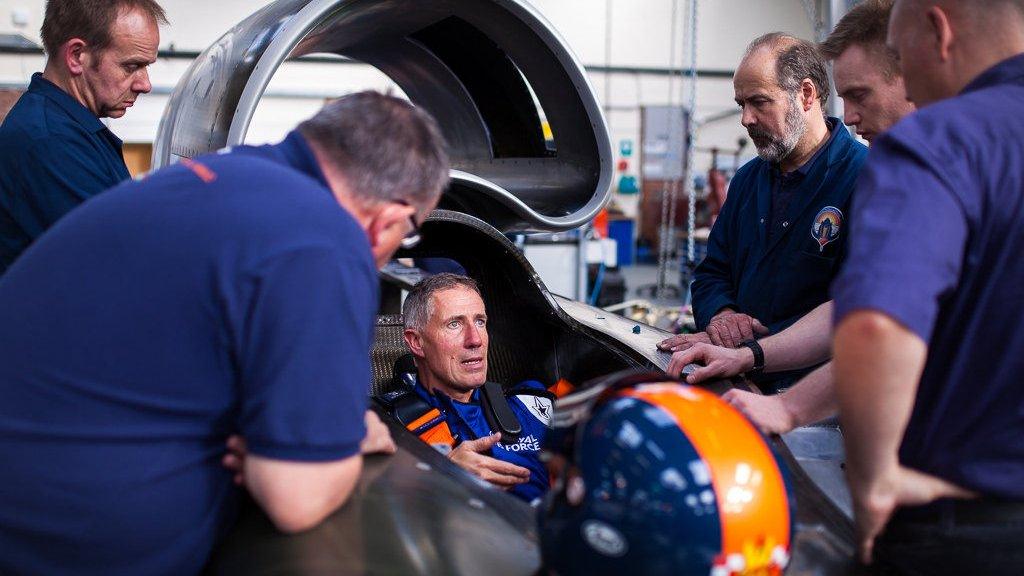
- Published25 March 2015
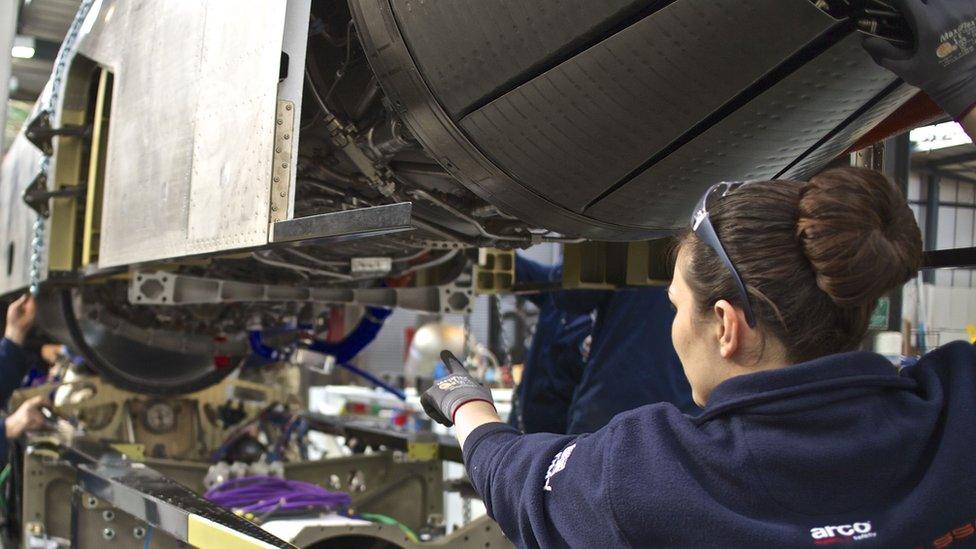
- Published14 March 2015
- Published2 March 2015
